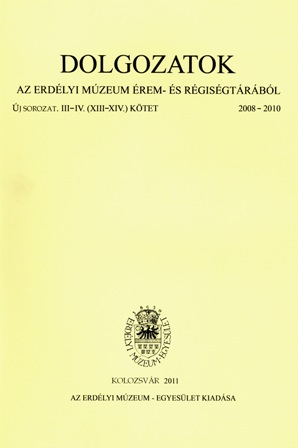
A marosvásárhelyi barokk mesterkör kutatásának újabb eredményei
Our study analyses the 18th century Marosvásárhely (Târgu-Mures) craftsman society through an approach from the perspective of architectural history based on archival sources, and with special emphasis on the development of the status of masons, not ignoring however the situation of carpenters, joiners, locksmiths and potters, who were in close relation with the construction industry. The results of the study unequivocally state that from the mid 18th century onwards there is a definite headcount increase within the construction industry and pertaining to this, within masonry as well. A key role in this process is held by the mostly German craftsmen migrating to the city. Their linguistic and religious separation makes them clearly distinguishable within the society of the city in this period, bringing thus validation and also a special connotation to the concept of “Craftsman Circle”. Hence, the linguistically isolated, mostly Catholic immigrants (especially in the first decades) have necessarily formed a sort of separated community in the predominantly Hungarian and typically reformat society of the city. We must emphasize that the immigration processes in Marosvásárhely are in line with the contemporary phenomena specified by Margit B. Nagy in other Transylvanian cities such as Kolozsvár (Cluj-Napoca) or Szamosújvár (Gherla). In comparison with Kolozsvár discrepancy can be determined only in the intensity of immigration (number of the immigrants) or in the temporal distribution of the process. The Baroque patterns have permanently spread in Marosvásárhely as a result of the activity of these craftsmen. Arriving from Austria, Bavaria, Silesia, Hungary and from various regions of the German linguistic areas, these craftsmen had already been familiar with the forms and technical solutions of the Baroque, and this knowledge was continuously refreshed and enriched by other influences (even if springing from similar artistic roots) of the various craftsman centers of Transylvania, here it is enough if we mention Anton Schuchbauer working at the Toldalagi-palace, or Romanus Lehr the stucco-modeler from Szamosújvár, or the inevitable import of the products delivered by the stone-cutter workshops from Kolozsvár. Being aware of the rather obsolete architectural circumstances previously prevailing in Marosvásárhely, these immigrants, bearers of a new kind of architectural knowledge, must unquestionably be considered factors of modernization. This basically Late Baroque architectural tradition established due to the 18th century craftsmen was afterwards successfully conserved and prevailed firmly in the city even in the first decades of the 19th century.
More...